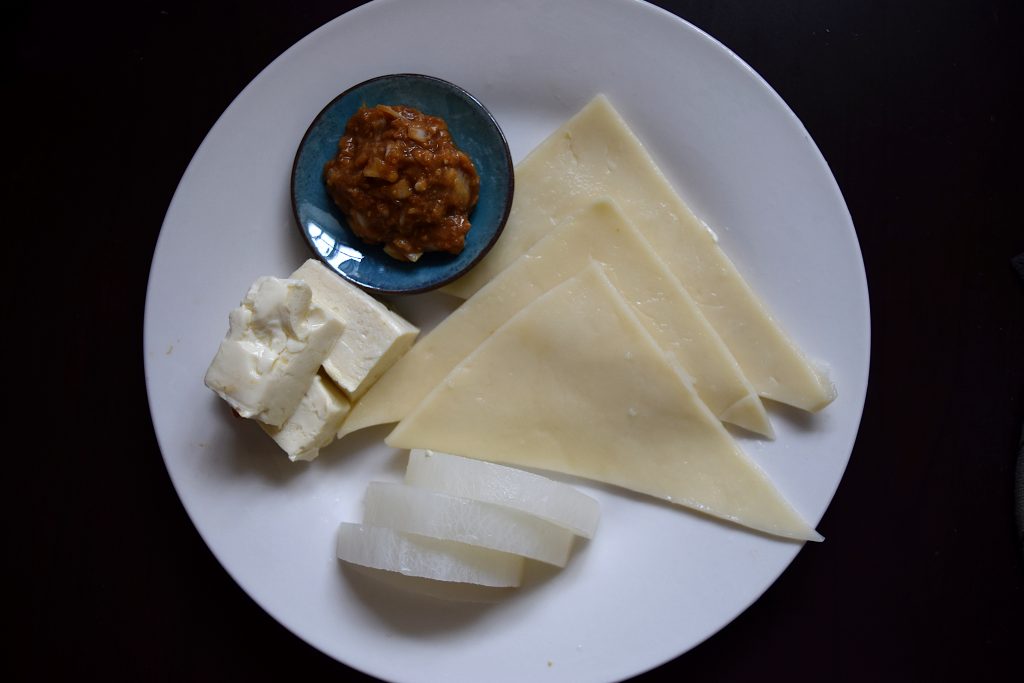Soba & Mugi Kakke are two unique dishes that are readily found in the Hachinohe Area and utilize wheat and buckwheat. The dishes are made by forming a dough using buckwheat (soba) or wheat (mugi), rolling it out, and then cutting it into triangular or square pieces. The pieces are then boiled and eaten with Japanese long onion (negi), miso or garlic miso.
While the Japanese staple of long soba noodles is still very popular in the area, the interesting shape, relative ease of making, and enjoyable texture of these peculiar noodles make them a local favorite. When the weather in the countryside begins to grow cold or a comforting dish is needed in a time of stress or sorrow, this dish is an easy and traditional go-to. Even in modern times, big packs of square and raw buckwheat or wheat noodle sheets can be found in all the supermarkets in the Hachinohe Area, making it even easier for moms and dads to whip up a family dinner.
The origin of the name kakke is not from standard Japanese, and is subject to some debate. One commonly cited story is that it comes from the Japanese noun kakera, which means something like a shred or a scrap, and is used to describe the pieces of leftovers that come from cutting buckwheat and udon noodles. Not wanting to let these scraps go to waste, the people of the Hachinohe repurposed them into a dish that slowly turned into the kakke dish of today. Another story says that the name comes from the local word for a horse’s kneecap, which the noodles are said to resemble.
Notes on adjustments:
- The recipe below is made with wheat flour, but the most common kakke is made with buckwheat. If you want to make the noodles with buckwheat flour, follow the recipe as is but substitute the wheat for 1 cup of buckwheat and decrease the water for the dough to 4 tablespoons.
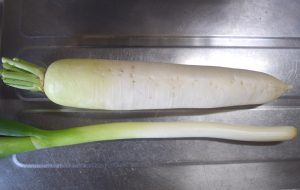
Daikon & Negi
- If you cannot easily find daikon (Japanese long radish), turnips, radishes or potatoes will work. Just adjust the cooking time to suit.
- Kakke is traditionally served with negi-miso (see recipe below). If you cannot find negi (Japanese long onion), leeks or green onions can be used instead.
- Furthermore, if you cannot easily find miso, the noodles can be used with a variety of other sauces such as tomato sauce for pasta, or even simply a little bit of olive oil, black pepper and cheese (parmesan, etc.)
- Kakke also works very well as a hot pot dish. If you have a portable range, follow the recipe below but instead of adding all the noodles at once, divide the raw noodles and have each person cook theirs one at a time.
Recipe for Soba & Mugi Kakke
Ingredients (serves two):
For the Noodles:
- 200g (about 1.5 cups) of all-purpose wheat flour (or buckwheat flour)
- 1 tsp of salt
- 95 ml (around 3 oz) of hot water (at around 70 C / 160 F)
For the Pot:
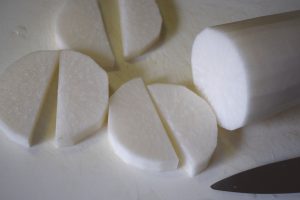
- 1 daikon radish, peeled, cut into rounds about an inch thick, and then halved
- 1 block of tofu (about 400g), drained, and cut into one-inch blocks
For the Negi-Miso (Japanese Long Onion & Miso Dip):
- 3 Tbsps. of miso
- 1 negi (Japanese long onion) or leek, shredded
- 1/2 tsp. of sugar
- 2 tsp. of cooking sake (optional)
- 1 clove of garlic, grated into a paste (optional)
Directions:
Make the Noodle Dough:
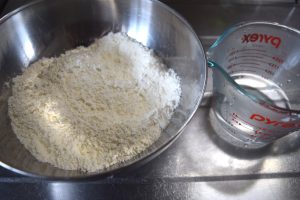
- Place flour and salt into a bowl and pour in hot water, mix well.
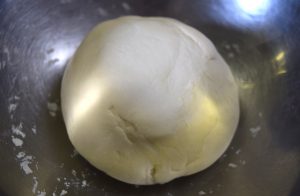
- Knead the dough well until elastic and smooth, this should take around 10 minutes.
- Rest the dough in a bowl in a warm place with a damp cloth over it for around 15 minutes. While you are waiting, prepare the daikon and tofu, and then make the miso.
Make the Miso:
- Shred the negi, add to a bowl. If you are using a leek, which are considerably bigger than Japanese negi, you may only need about half of a leek.
…….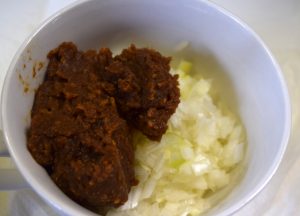 …
…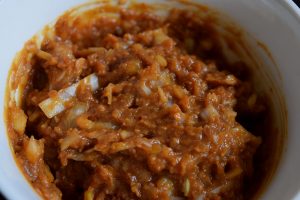
- Add the remaining ingredients for the negi-miso into the bowl with the negi, mix well.
Make the Noodles:
- Flour a cooking board or kitchen work area, turn out the dough, and make a rough rectangle with your hands.
- Using a rolling pin, continue to flatten and roll out the dough into a rough rectangle until the dough is about half a centimeter (1/4 inch) thick.
…….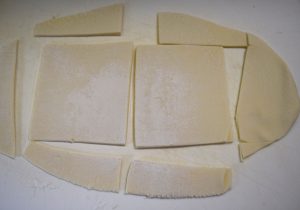 …
…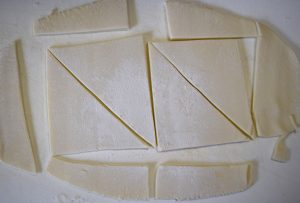
- Cut the dough first into 8 cm squares (about 3.25 inches), then cut the squares diagonally to form triangles.
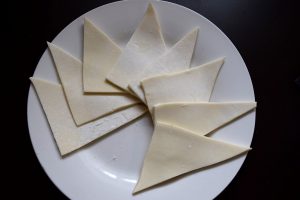
- Transfer the triangles on to a plate, gather the remaining dough scraps and repeat until all the dough is used.
Cook the Noodles:
- Bring a large pot of lightly salted water to a boil, and add in the daikon.
- Cook the daikon pieces until they are just fork-tender.
- While stirring the pot, add in the triangles, then add in the tofu.
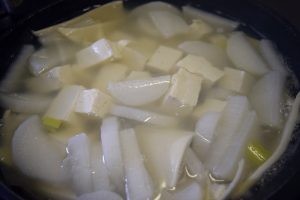
- Once the noodles have floated to the top, they are done. Remove the pot from the heat.
To Serve:
- Use a slotted spoon to transfer the noodles, daikon, and tofu to serving bowls or plates.
- Add a small dab of negi–miso piece by piece as you eat.
